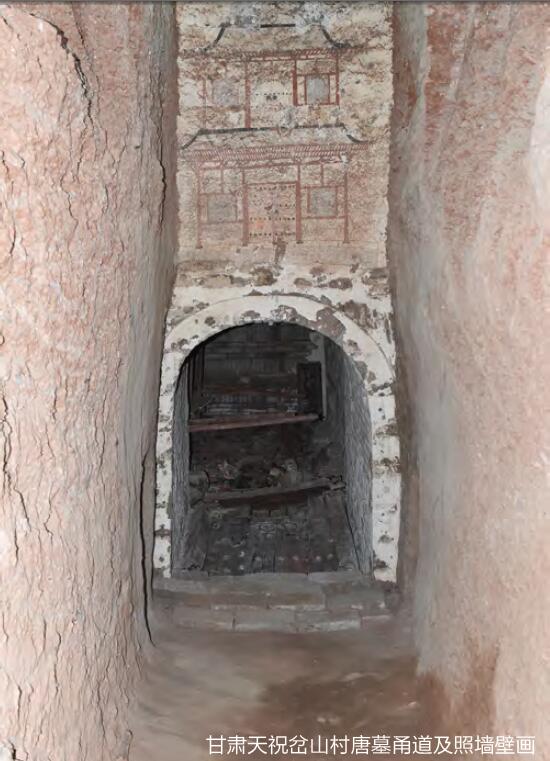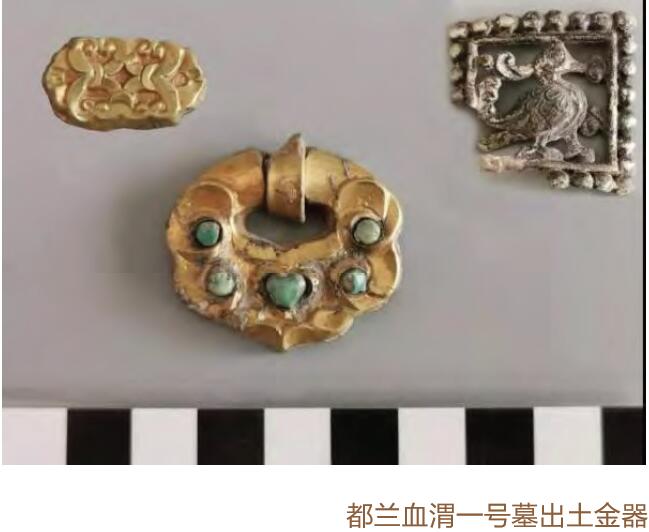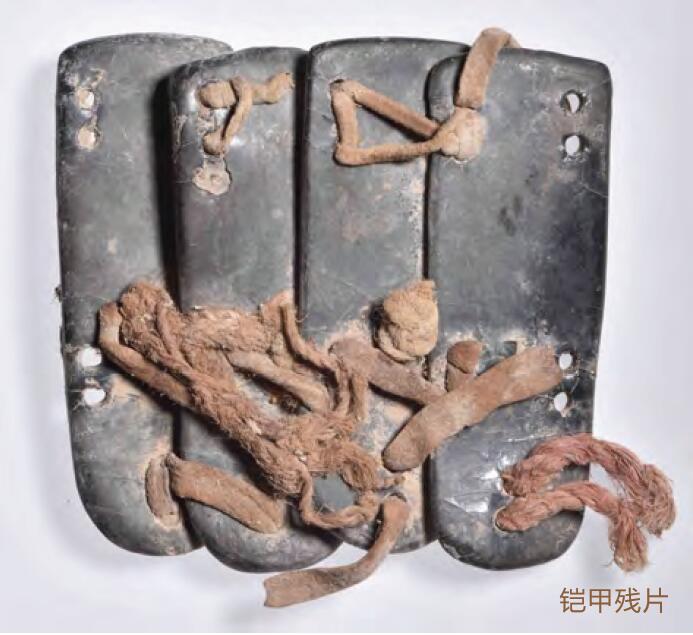DepthReading
Four new archaeological achievements conŽrm the integration and exchange on the ancient Silk Road
preserved parts of the frescoes, acharacter image on the
lower wall and an astrological chart on the roof can be seen.
Archaeologists also found more than 220 objects including
painted pottery, lacquer wood, stone, bronze, gold and silver
objects. A stone epitaph with the inscriptions of "The Epitaph
of the Ruler of Murong of the Wu Zhou Period” was unearthed
in the middle of the chamber passage. The discovery of the
tomb has played an important supplementary role in improv -
ing the royal family tree of late period Tuyuhun and related
historical issues.
Expert comments: This tomb was the earliest and most complete
tomb of the Tuyuhun family discovered and excavated in
Wuwei region, which was also rare in C hina and w as an
important discovery of archaeology research on the Tuyuhun
tomb. The discovery of this tomb will help the studies of burial
customs of Tuyuhun, the relationship between the Tang and Tuyuhun, the history of traffic on the Silk Road and the history
of material culture.
2018 Xuewei No. 1 Tomb: discovery of complete
cemetery building refreshing cognition of
Reshui tombs
The tombs of Reshui located in R eshui Township, Dulan
County, Haixi Mongol and Tibetan Autonomous Prefecture,
Qinghai, were the important tombs in the 6th to 8th centuries.
Since its discovery in 1982, a series of important archeology
discoveries have fully proved that this area was an important
node on the Silk Road.
2018 Xuewei No. 1 Tomb, with a large scale and complete
structure, was the most well-preserved and clearly structured
tomb among the high-standard tombs found on the Qinghai
Tibetan Plateau so far. A complete graveyard architecture was
found in Reshui tombs for the first time. A large number of cultural
relics have been unearthed, including Tibetan document wooden
slips, gold and silver belts, ornaments, silk textiles, leather ,
lacquer ware, turquoise, crystal and so on. The large scale and
the high grade of this tomb reflects the high political status and
economic strength of the owner of the tomb.
Expert comments: The discovery of the burial architecture in 2018
Xuewei No. 1 Tomb was an important material for the study of
high-grade burial system and customs of Reshui tombs, and a
new breakthrough and progress in the study of Reshui tombs.
Quangou No. 1 Tomb: Exquisite murals and gilt
crown showing the political and cultural exchanges
between Tubo and the Tang Dynasty in
the central China.
Quangou Tomb is located in the valley area around Quangou,
Hedong Village, Xiligou Town, Wulan County, Qinghai Province,
which was a new discovery at the third national survey of cultural
heritage in Qinghai Province.
Quangou No. 1 Tomb is a multi-chamber tomb shaped as a rectangular
brick-wood mixed structure with a passage. Archaeology excavations showed that this tomb was the first Tubo mural tomb
found on the Qinghai-Tibet Plateau. Mural tombs were very popular
in the Han culture area, but they were extremely rare in th e
Qinghai-Tibet Plateau, especially during the Tubo ruling period.
This type of tomb decoration was not popular , showing the
uniqueness of the tomb. The painting technique had a strong
influence of the Tang style, and the image also had the characteristics
of the nomadic people of the Qinghai-Tibet Plateau, which
had a high historical value and artistic value.
The painted lacquer coffin in the tomb was a unique form of burial
decoration found on the Qinghai-Tibet Plateau for the first time.
Painted wooden coffins were more common in Qinghai, while
coffins without painting were more common in the Central Plains.
This was also a fusion of different cultures in the two regions. Due
to the limitations of lacquer making technology and raw materials,
it was extremely dif ficult to make large lacquer wares at the
Qinghai-Tibet Plateau, which also implied that the tomb had an
extraordinary level.
Inside the tomb was a sealed dark grid where the gilt crown was
placed. The crown showed that the owner of the tomb was likely
to have a close relationship with the local royal family during the
Tubo period and once had a very high dominance. It can also be
inferred that during the Tubo period, high-level administrative and
military institutions may have been set up in the northern margin
of the Qaidam Basin.
Based on the characteristics of the excavations and the style
of the mural, it can be inferred that the tomb was of the Tubo
period, and the carbon 14 dating showed that it was around
700 AD. The rich accumulation of wealth and the height of
civilization during the period of Tuyuhun and Tubo rule, as
well as the continuous cultural input from the Tang Dynasty
and Central Asia, had an important influence on the formation
of multi-ethnic culture in Qinghai.
Expert comments: The discovery of the Quangou No. 1 tomb
had great academic value for exploring the process of ancient
Han-Tibetan cultural integration and the cultural exchanges of
the Qinghai Silk Road..
Keyak Khduk Beacon Tower in Xinjiang: documents
and wooden slips vividly interpreted the
management and military defense system of
the Silk Road in the Tang Dynasty
The site of the ancient beacon tower of Yuli County, Xinjiang
was one of the beacon tow ers in the Peacock River, which
consists of 11 beacon towers.
According to the excavation discovories, the site named
Keyak Khduk was built on a large dune strengthend by tamarisk.
It was a comprehensive structure and complete military
facility site consisting of the body of beacon tower, residential
buildings and other buildings.
The unearthed relics and carbon 14 dating indicated that the
site was built in the Tang Dynasty. Archeologists initially
believed that Keyak Khduk Beacon Tower was a military facility
of Yanqi Town, one of the four garrison towns of Anxi, which was built to prevent the invasion of Tubo.
Under the southern slope of the dune, a "garbage dump"
remain was found, containing various types of living r elics,
including 633 precious paper documents and wooden slips.
The military documents between the frontier military unit and
the beacon towers and the superior management agencies
recorded in detail the names of military facilities at all levels
related to beacon towers along the P eacock River. The
unearthed wooden slips were kept intact, with clear handwritings,
and the content mainly recorded the account books and
the system of the “all clear”(ping’an) signal in the morning and
at nightfall between the unit and the beacon towers. This was
the first archaeological discovery in China.
Expert Comments: The various documents and wooden slips
unearthed from the Keyak Khduk Site had filled the gap in the
historical literature on the defense system of Yanqi Town, one
of the four garrison tow ns in Anxi in the Tang Dynasty. It
played a very important role in unders tanding all aspects of
military, political, economic, cultural and social life in the Tang
Dynasty, and was also of great significance to demonstrate
the effective governance and jurisdiction of the Tang Dynasty
to the Western Region, and the cultural identity of the Western
Region to the central government.
Category: English
DepthReading
Key words:





